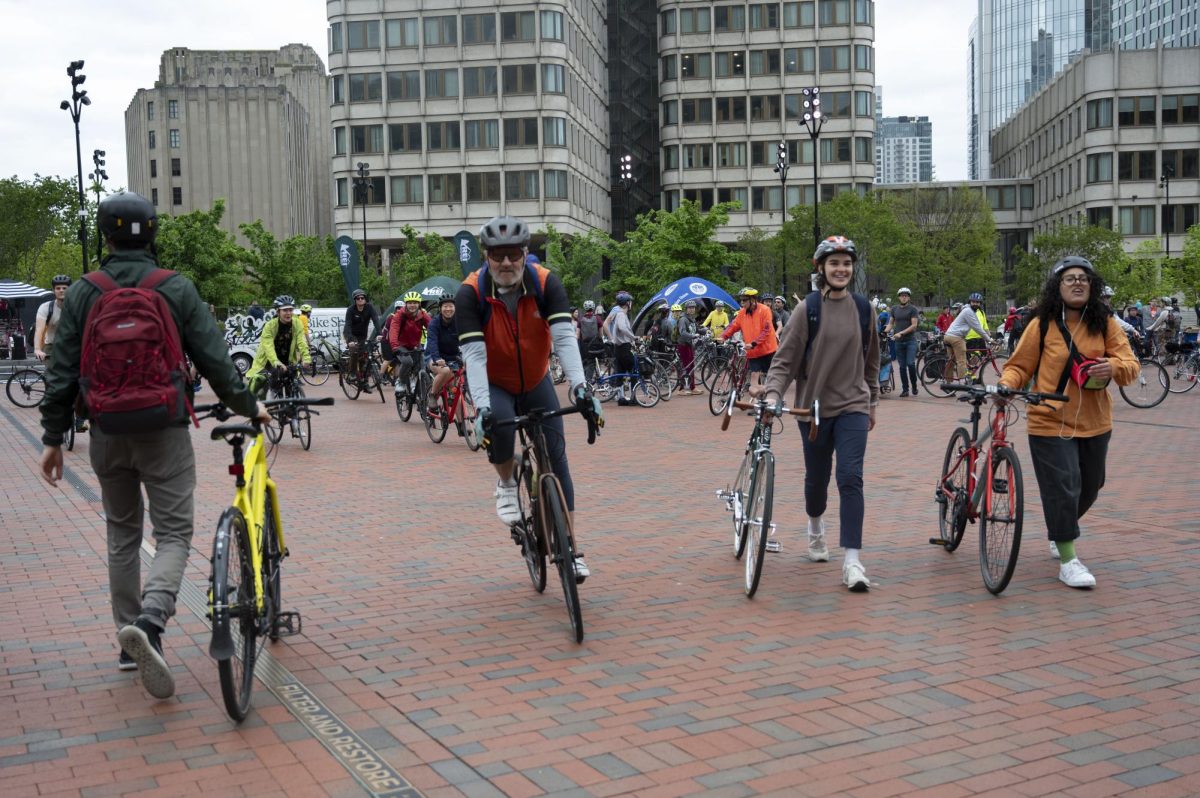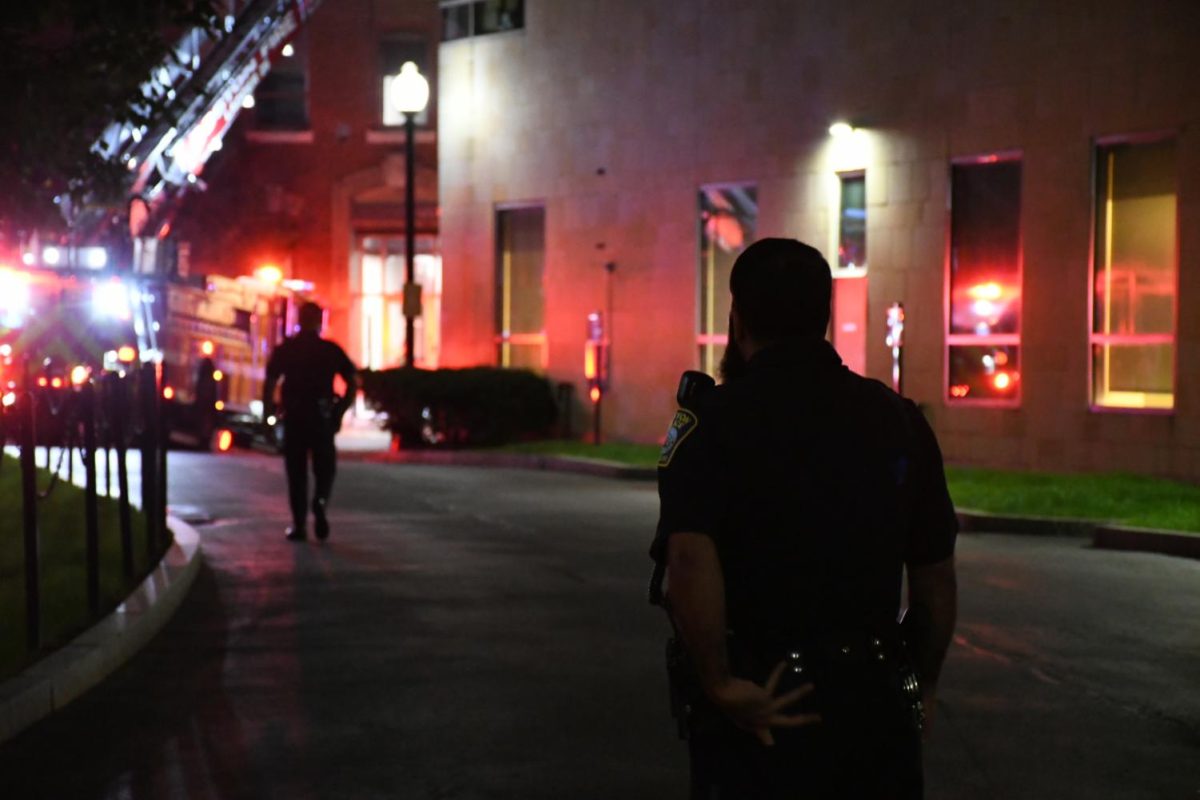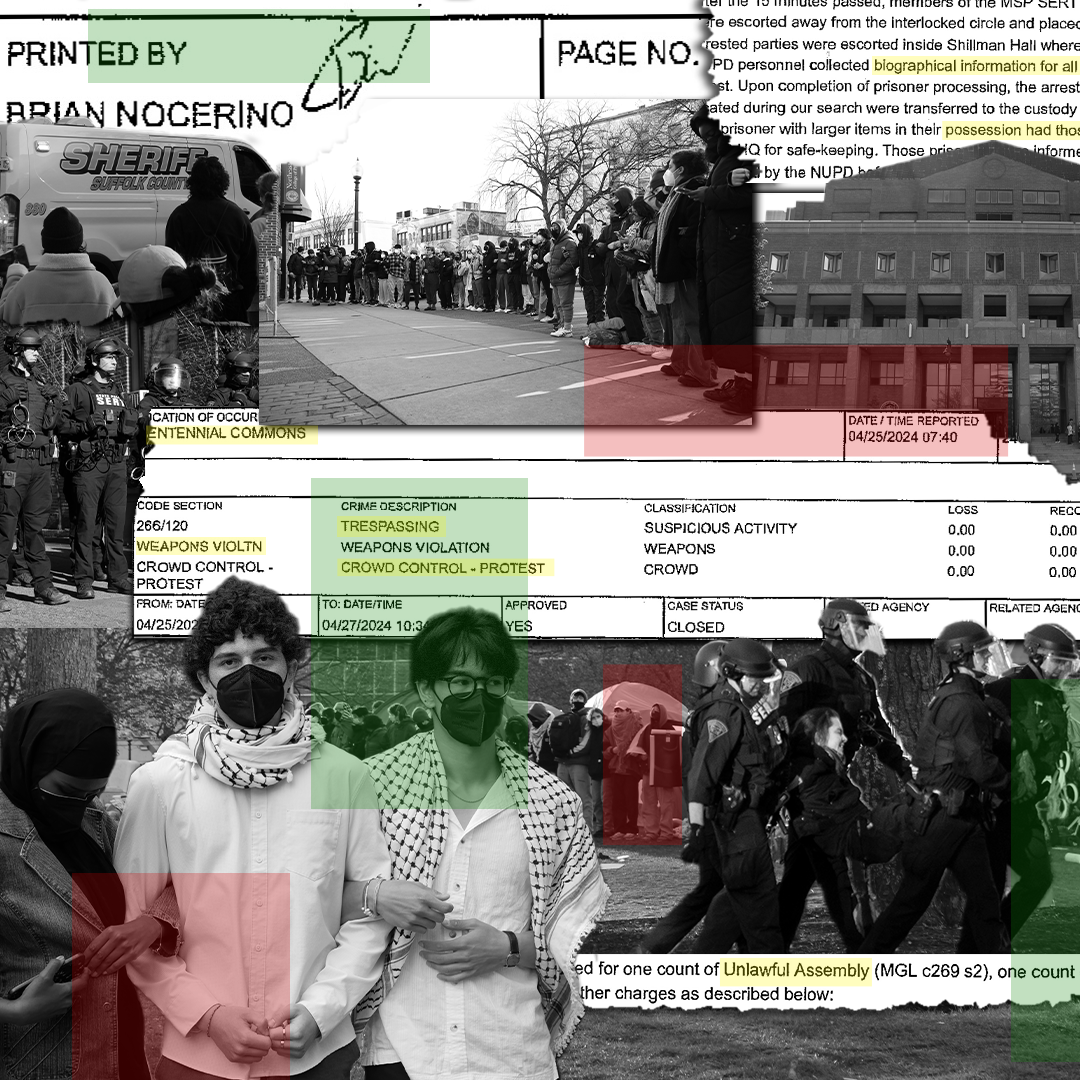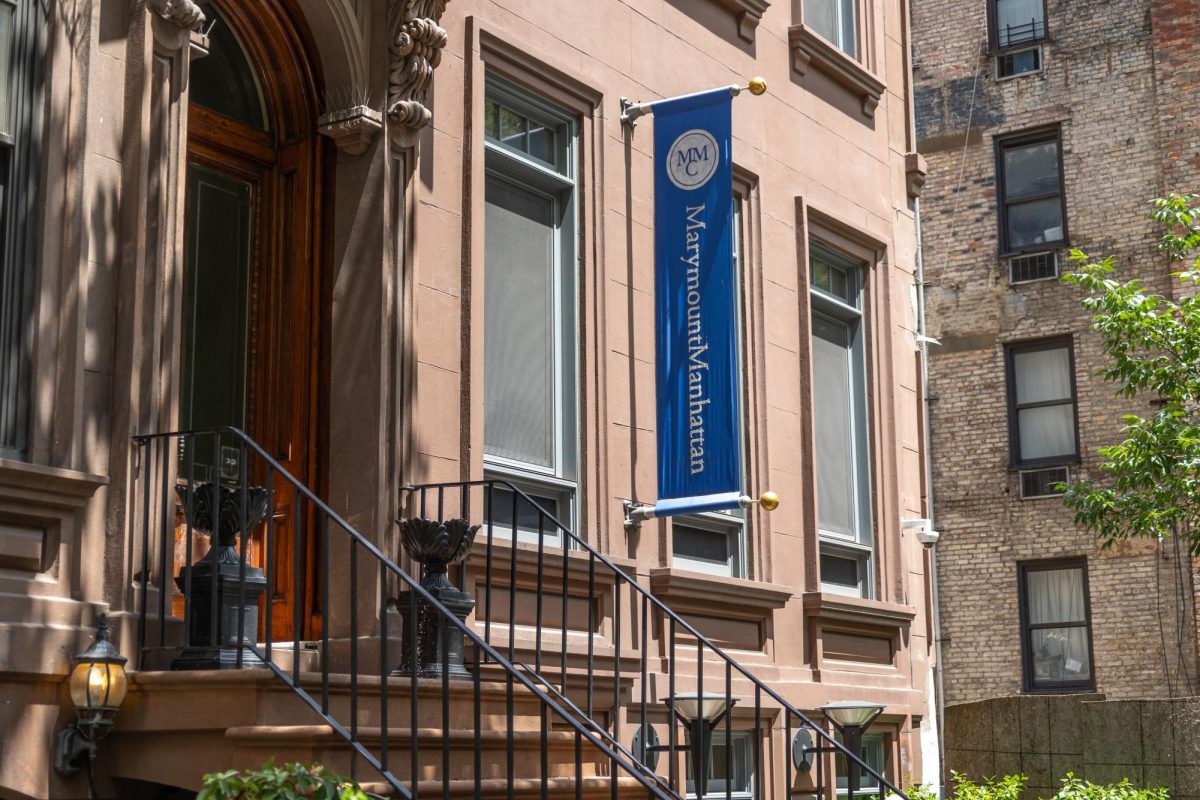Every year on Patriot’s Day, athletes from around the globe flock to Boston to compete in the storied Boston Marathon, one of the world’s best-known races and a competition thousands of competitors look forward to annually. Among those 30,000 hopeful individuals are a number of athletes with disabilities, who compete in para athletics divisions, adapted so that they too have the opportunity to flourish.
The Boston Athletic Association, or BAA, offers categories for those with visual, physical, coordination and intellectual impairments, with subdivisions based on the scope and degree of their disability. These divisions allow para athletic entrants to pursue their passion with necessary accommodations.
Rolando Lee, a 37-year-old teacher born in Guatemala and raised in New Jersey, found his place in the running community after losing his eyesight in an accident during college.
The accident injured both of Lee’s eyes, leaving him completely blind. “That’s when I got introduced to the blind community,” he said.
He hoped that a corneal transplant would allow him to regain some of his vision, but it was not a guarantee. Today, he is legally blind, but regained some of his vision through surgery.
“For most people, it’s probably not much vision, but compared to being totally blind, and I lived that life for about a year, it’s plenty for me. I’m forever grateful,” Lee said.
Lee said he especially loved playing team sports growing up, but after his accident, he had to find a new way to channel his athleticism.
After losing his vision he began running in a neighborhood park he had frequented since childhood, and the familiarity allowed him to feel safe running around the two-mile loop. Eventually, his coworker asked if he’d train for a half marathon with him.
“In my mind, I’m like, ‘I can only run in this little loop,’ but at the same time, I kind of always wanted that challenge,” Lee said.
The blind community referred him to Achilles International, an organization in 18 countries which offters athletic programs for people with disabilities.
Achilles helps people with a variety of disabilities, including those with visual impairments like Lee. Upon arrival at an Achilles workout, Lee was handed a neck buff to use as a tether by Joseph Sorbanelli, who started the New Jersey chapter of Achilles. Lee would hold onto one end, and a running guide the other.
“Tomorrow in Boston, I’m still using the exact same bright neon yellow Achilles tether that [Sorbanelli] gave me back in 2022,” Lee said.
Maccabee Avishur, a 49-year-old marathon runner, rabbi and high school principal from New Jersey, will hold onto the other side of Lee’s tether for the Boston Marathon.
Avishur began his own running journey in 2019. He stumbled upon Achilles in a park while training and quickly joined the organization. He said being an Achilles guide allows him to combine two of his passions: doing good things in the world and running.
“I never thought I was going to run [the Boston Marathon], and when Rolando mentioned a couple of months ago that he was running and was looking for a guide, I said I’d be happy to help,” Avishur said.
Although the para athletics field of the Boston Marathon has expanded dramatically over the years, it all started with the wheelchair division. In 1975, the Boston Marathon was the first major world race to introduce this category, and today, it attracts hundreds of internationally renowned para athletes.
One of these athletes, Switzerland’s Marcel Hug, nicknamed “The Silver Bullet,” returned to Boston this year to claim his seventh race title. Monday, he sped to a blistering 1:15:32, breaking his own course record by more than a minute and a half.
“It’s very important that we have this opportunity to be involved in this race,” Hug said. “It’s a very historic marathon, so I think the Boston Marathon plays a very important role in this inclusivity, especially as they have been very early in including wheelchair racing, but also other para athlete divisions.”
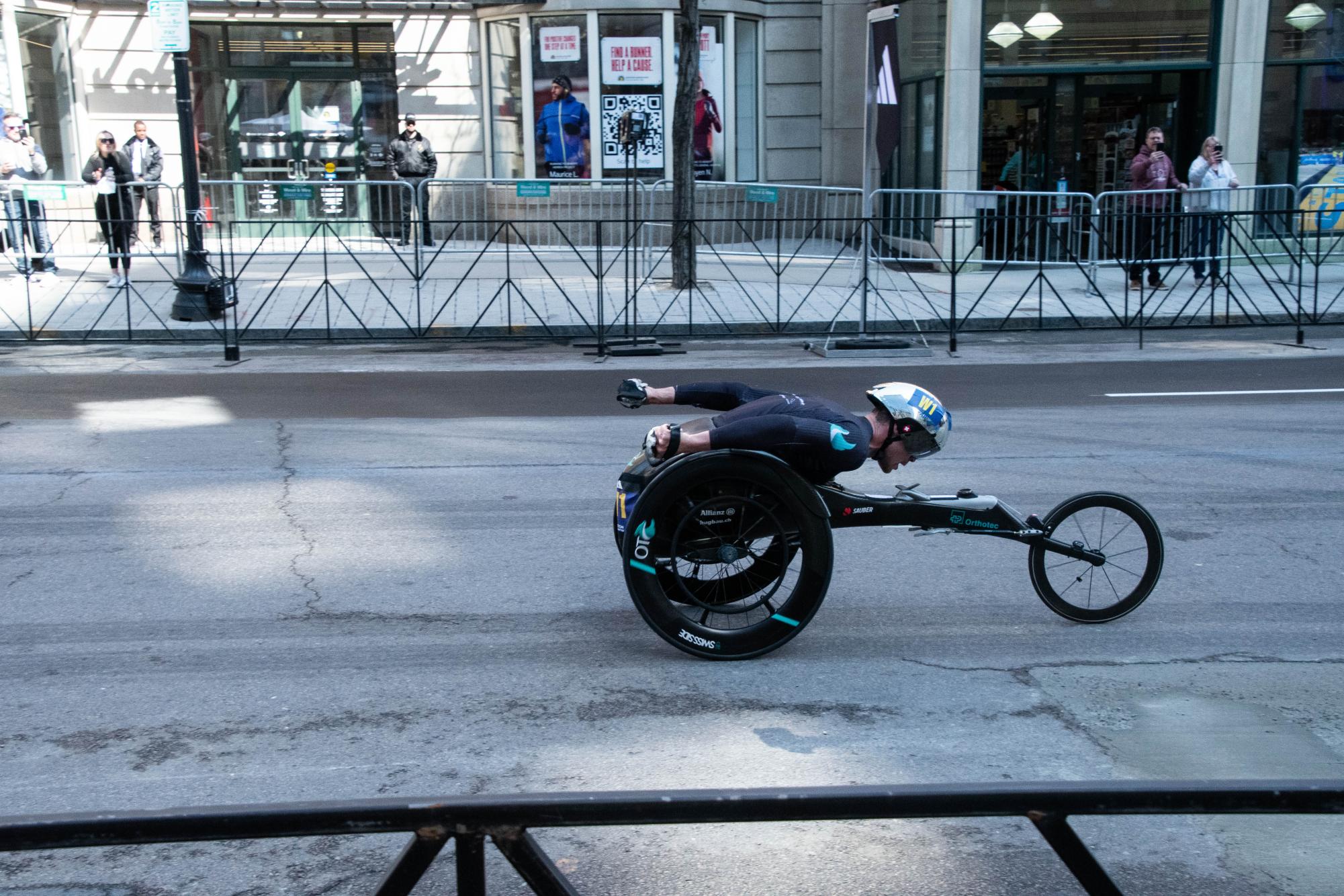
Although Hug’s talent and athleticism are evident in his dominant victory, times like that were not always possible. Racing wheelchairs have developed since that first trip through Boston 51 years ago, and the technological improvements continue to further athletes’ opportunities.
“Technology in racing chairs had a lot of impact,” Hug said. “They went lighter, they went stiffer, they went more aerodynamic.”
Racing wheelchairs were once composed of a four-wheeled aluminum structure, but have since been whittled down to a three-pronged carbon fiber model. Athletes can now move quicker, tearing through the marathon course in search of prize money and a still-growing spotlight. With the increases in both the financial rewards and the societal impact, Hug appreciates how the focus on para athletics has continued to develop.
“All in all, I can say we are [heading in] a very good direction,” Hug said. “A lot of good things are going on.”
During the 128th Boston Marathon today, the city’s attention was on every single athlete vying for a crown. And, with the continual efforts of the athletes and the organizations surrounding the race, reaching that crown becomes more and more accessible each year.
“I’m doing it to challenge myself, but I’m also doing it to show the world that we can do a lot of things,” Lee said.
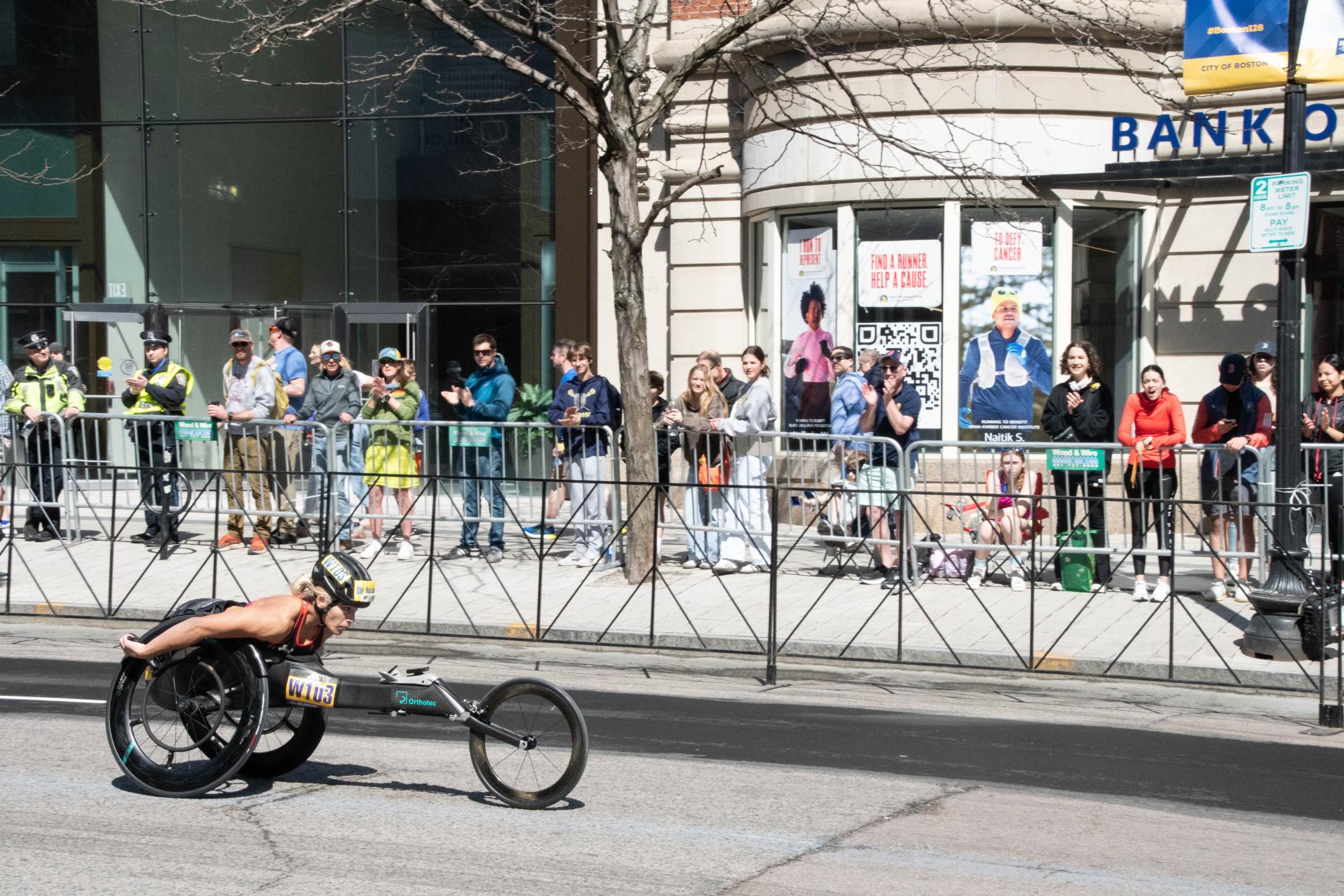









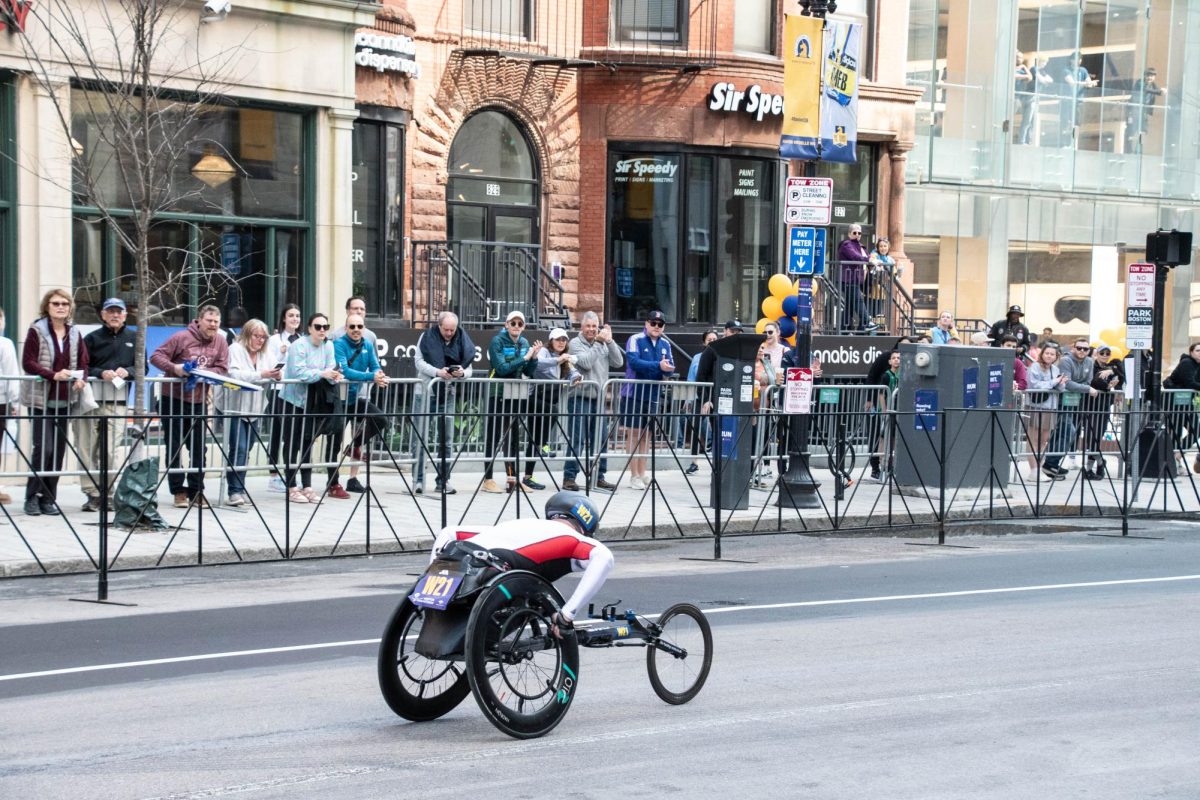

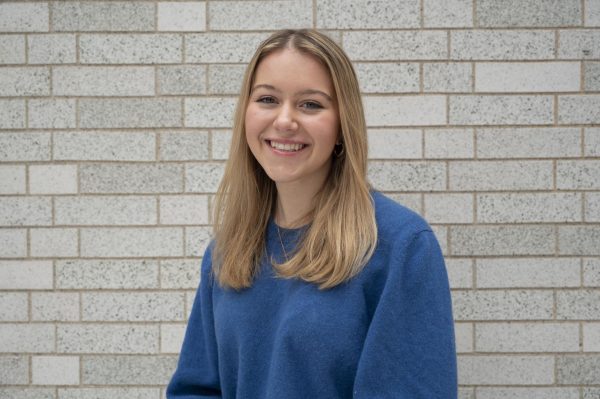


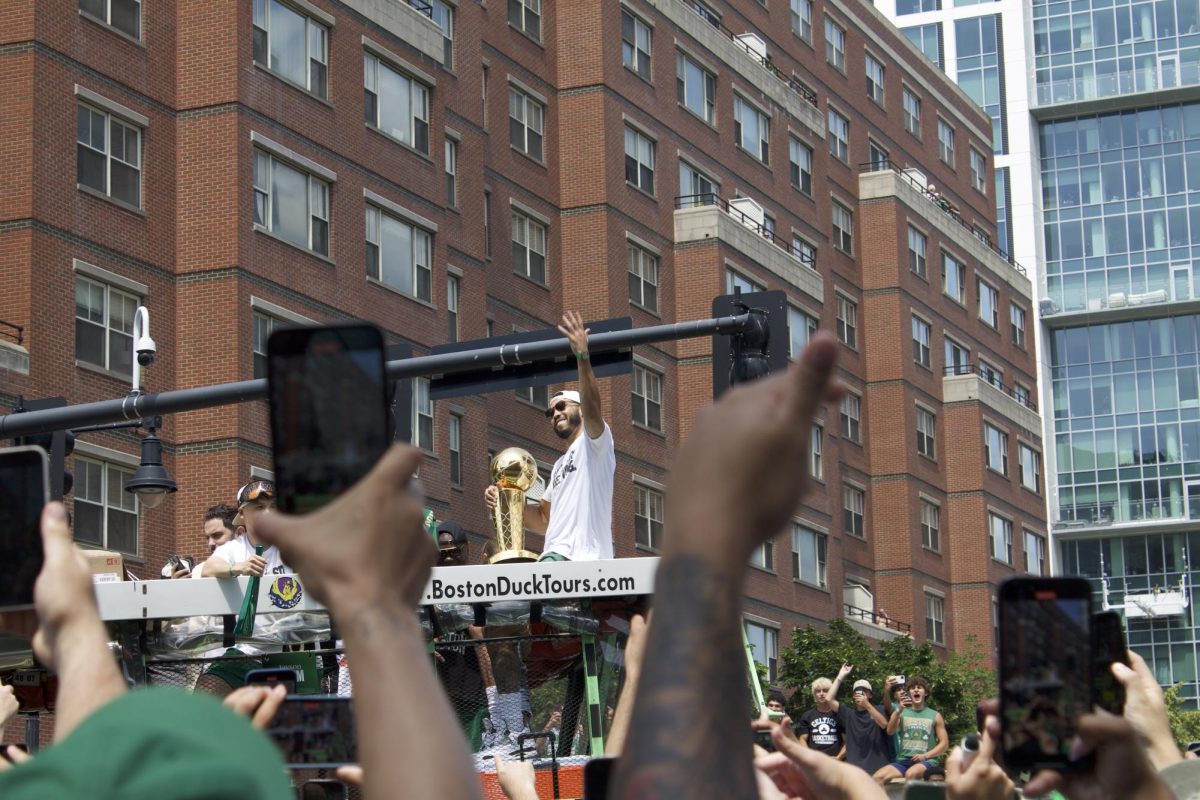
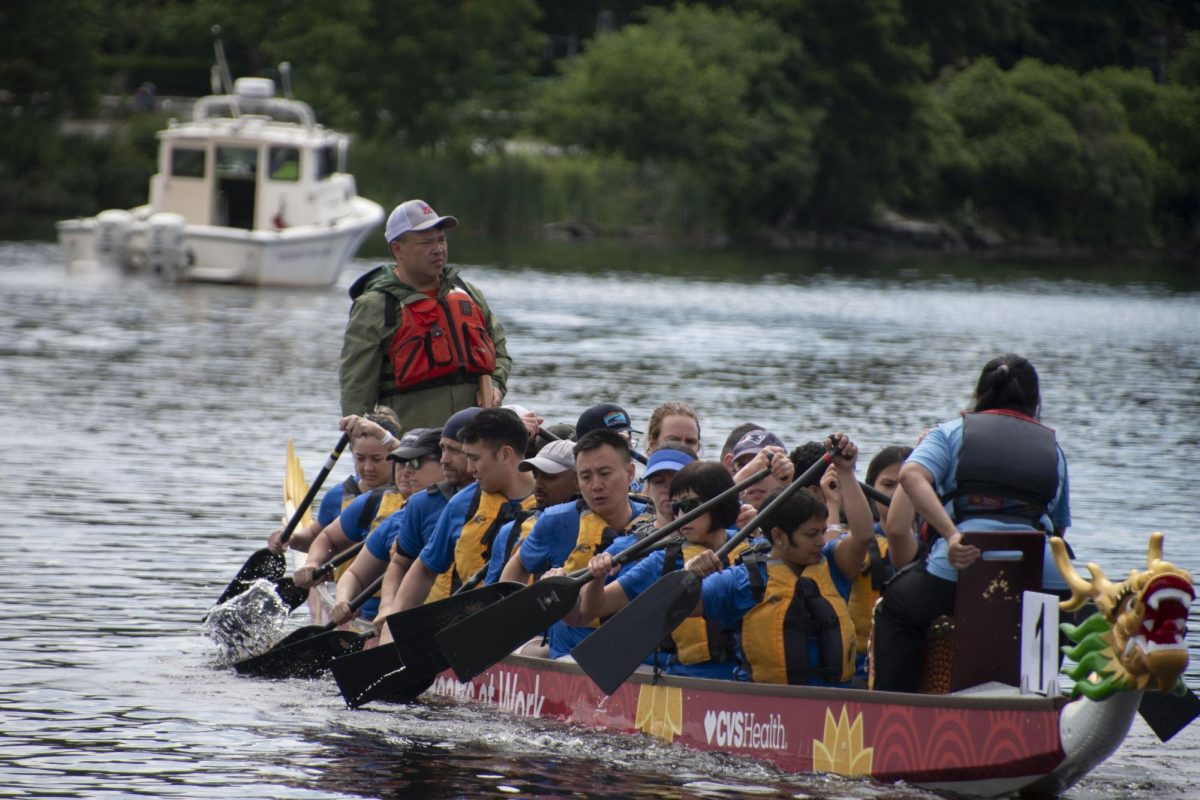
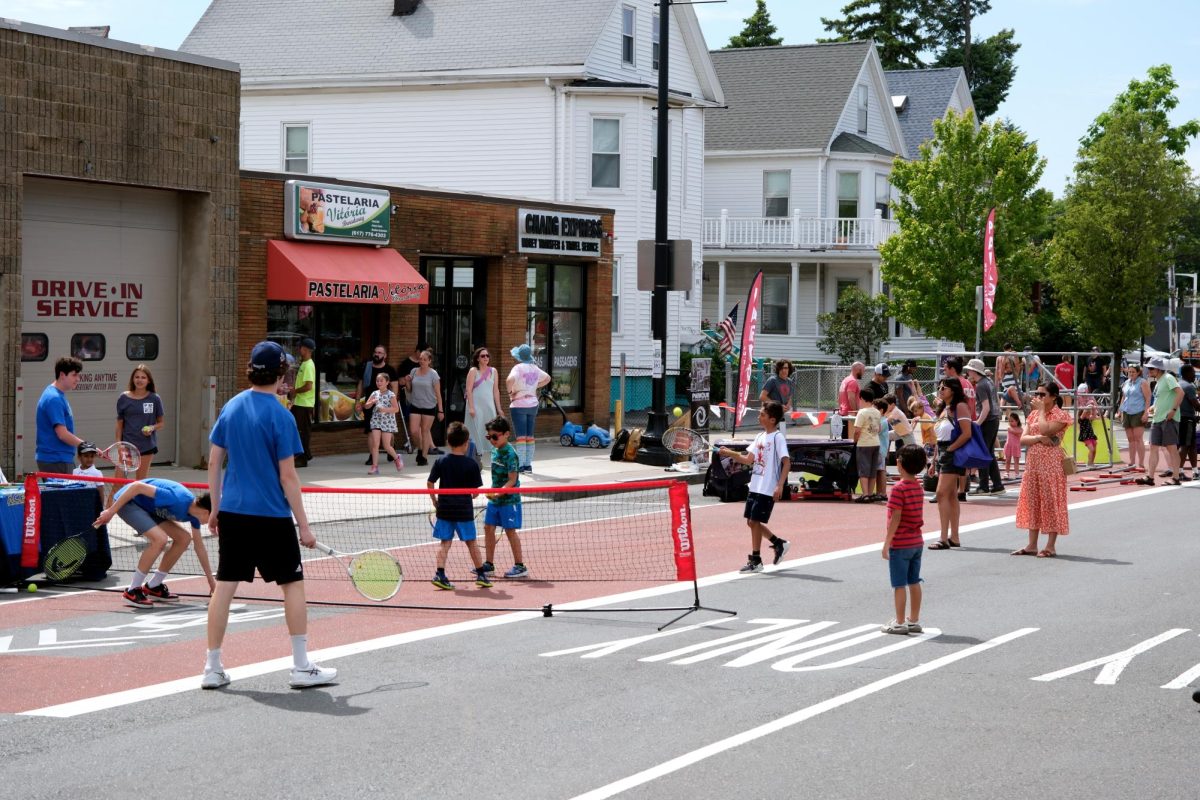
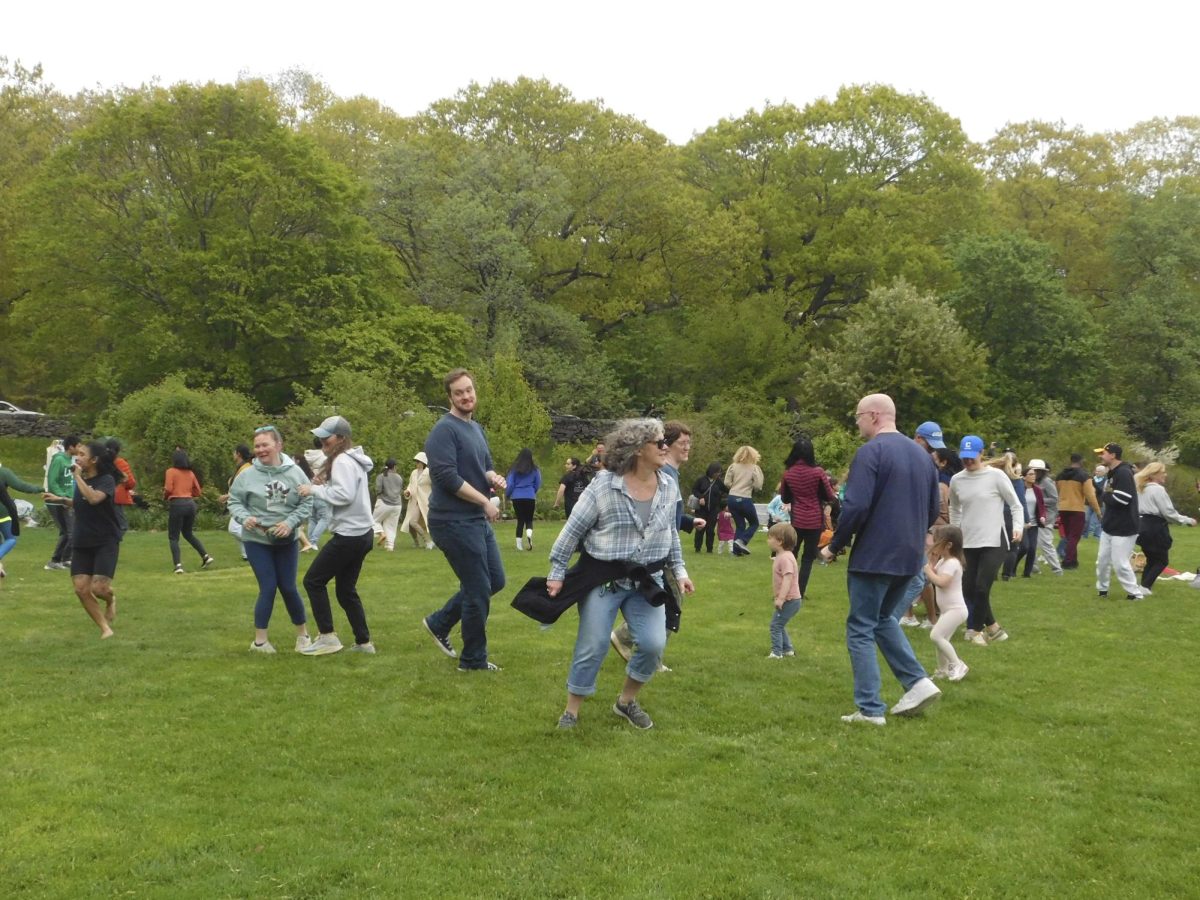
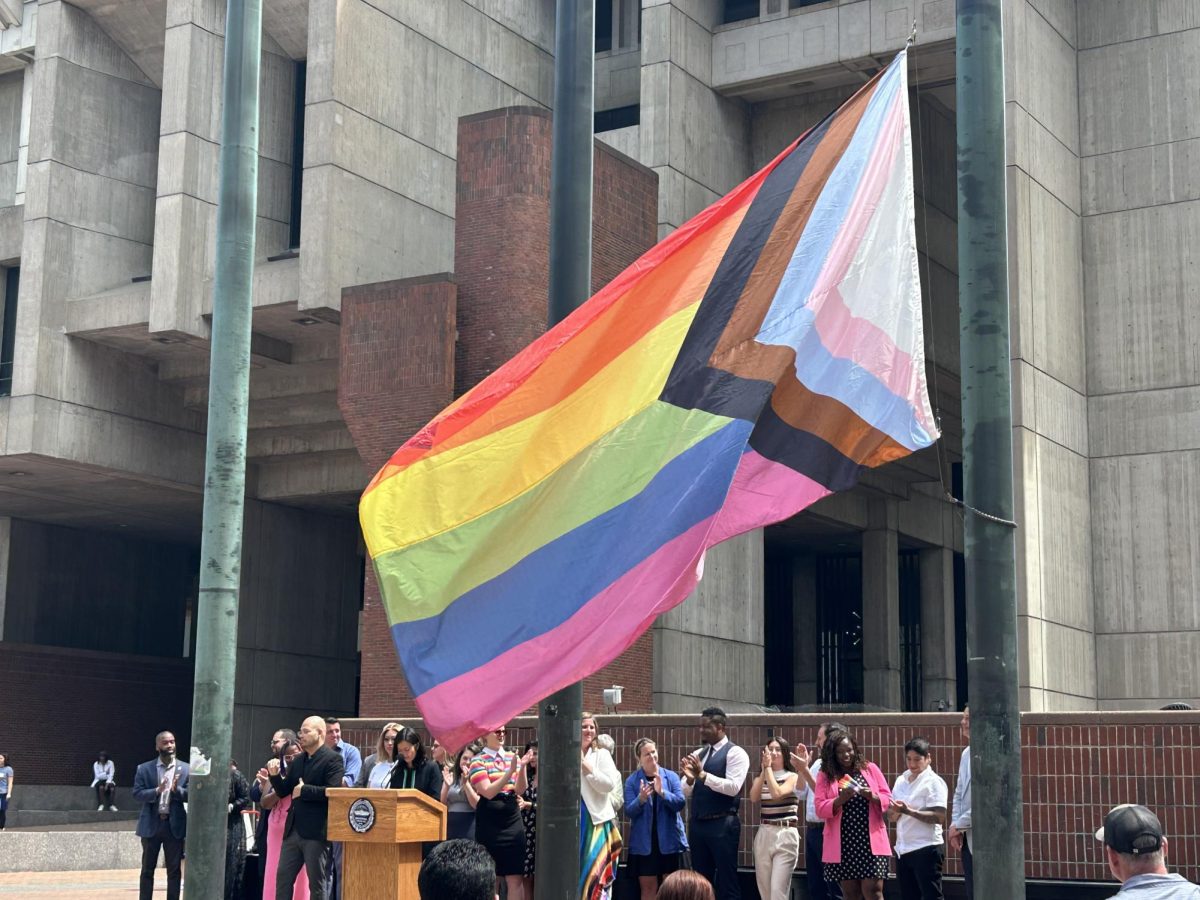

![Dominique Dixon poses for a photo with her handmade polymer clay earrings. Dixon founded Mahogani Shop in 2017 using her design background and inspiration from African culture. “I started [Mahogani] in a place where I was trying to rediscover myself as an artist, as a Black woman, Dixon said. So a lot of my influence comes from my culture, architecture, art.”](https://huntnewsnu.com/wp-content/uploads/2024/05/SeaportBlackOwnedBos.Market_5_19_24_ZoeMacDiarmid_6-1200x800.jpg)

